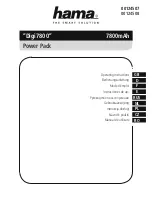
408-35042
Rev C
9
of 26
7. If terminals are post-feed, lift the Feed Pawl and pull the strip back one terminal length (the lead
terminal will then be moved over the Anvil on the downward stroke of the ram assembly).
8. Turn the Drag Release Lever
downward
to lower the Stock Drag.
9. Make sure the tip of the Feed Pawl is in the feed hole in the carrier strip.
NOTE
Some carrier strips have additional holes which are not used for feed purposes.
10. Hand-cycle the machine several times to make sure the applicator is properly adjusted as described in
Section 5.
11. Re-install the applicator guard assembly.
Terminal Strip Unloading
1. Cut the terminal strip one or two terminals from the end of the applicator.
NOTE
The applicator should never be unloaded unnecessarily. A section of terminal strip should always be left in the unit. Since it is
not necessary to remove the strip section for cleaning, lubrication, or repair, it should only be removed as a part of the loading
procedure.
2. If terminals are post-feed, turn the Drag Release Lever
upward
to raise the Stock Drag, lift the Feed
Pawl, and move the lead terminal over the Anvil.
5.
ADJUSTMENTS
Wire Crimp
A.
Crimp Height
1. The wire crimp is adjustable by rotating the Wire Crimp Disc from 0 (largest crimp height) to 14.5
(smallest crimp height) in increments of .01 mm [.0004 in.].
2. Select a crimp height reference setting number from 0 (largest crimp height) to 14.5 (smallest crimp
height) from the applicator print for the wire size to be used.
3. Turn the Wire Crimp Disc to line up with the specified crimp height reference setting number with the
indicator notch/cut out on the front of the Ram (see Figure 11).
4. Turn the Wire Crimp Disc
clockwise
to decrease the crimp height and turn the Wire Crimp Disc
counterclockwise
to increase the crimp height. Each increment represents a change in crimp height of
0.01 mm [.0004 in.].
Figure 11
Wire Crimp Disc
Indicator Notch/Cut Out
Insulation Crimp Dial










































